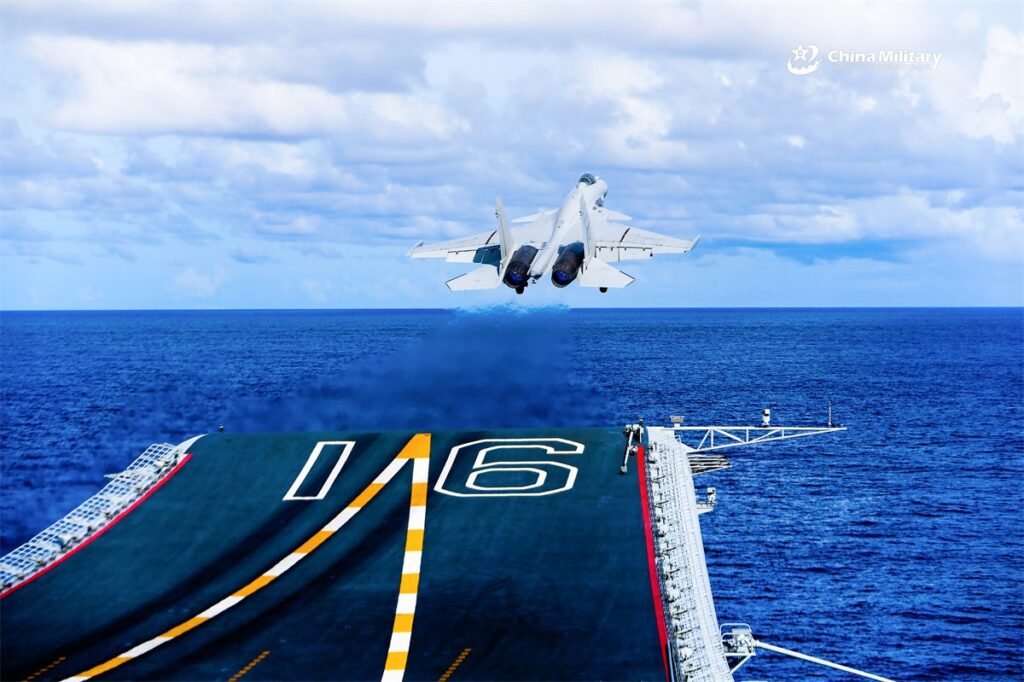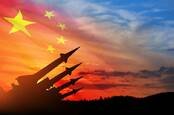The United States has deployed several major naval units in the western Pacific, where its main rival, China, recently flexed its military power with a dual aircraft carrier deployment.
Based on official disclosures and satellite imagery, a Newsweek map tracks the deployments of a U.S. aircraft carrier, a missile submarine, and two amphibious warships in the region.
Newsweek has emailed the U.S. Seventh Fleet—which maintains America’s naval presence in the western Pacific and Indian oceans—and the Chinese Defense Ministry for comment.
Why It Matters
In May, China—which possesses the world’s largest navy by hull count, with over 370 vessels—simultaneously deployed two aircraft carriers, CNS Liaoning and CNS Shandong, in the broader western Pacific, in a move seen as challenging America’s naval dominance.
While the Chinese navy expands its reach and presence, the U.S. Navy redeployed one of its aircraft carriers—USS Nimitz—from the western Pacific to the Middle East, leaving USS George Washington as the only U.S. aircraft carrier in the region to help counter China.
What To Know
The George Washington was spotted underway near Japan‘s southwestern islands in the Philippine Sea on Monday, according to a satellite image. The U.S. Navy said the aircraft carrier was leading a naval strike group on patrol in the Seventh Fleet’s area of operations.
Officially released footage shows the George Washington—homeported in Japan since November 2024—conducting flight operations with its fighter jets. The aircraft carrier is capable of deploying various aircraft, including the F/A-18E/F and the stealthy F-35C fighter jet.
In a set of photos released on Sunday, USS Ohio—a guided-missile submarine homeported in Bangor, Washington—arrived at Naval Base Guam on June 23. The island of Guam, the westernmost U.S. territory, serves as a staging area to project military power against China.
This marked the second time the Ohio made a stopover in Guam since April. The nuclear-powered submarine can carry up to 154 Tomahawk cruise missiles—which have a range of 1,000 miles—and accommodate up to 66 special operations personnel and their equipment.

The United States guided-missile submarine USS Ohio transits Apra Harbor, Naval Base Guam, on June 23, 2025.
Lt. James Caliva/U.S. Navy
The West Coast-based submarine was conducting “routine operations,” a photo caption read.
Meanwhile, the amphibious assault ship USS Tripoli arrived at its new home port in Sasebo, Japan, on June 23, following a trans-Pacific crossing that began in San Diego, California, on May 19. The warship is designed to carry fighter jets and project power from sea to shore.
The Tripoli is scheduled to replace USS America—its sister ship currently homeported in Sasebo. The Navy said this scheduled rotation of forces will ensure it has the “most capable ships” that can respond rapidly to the security environment in the Indo-Pacific region.
As of Sunday, the America was conducting flight operations with its F-35B stealth aircraft while underway in the Coral Sea, off the northeast coast of Australia. The warship visited the Australian city of Sydney on June 14, accompanied by two other amphibious ships.

The United States amphibious assault ship USS Tripoli arrives in Sasebo, Japan, on June 23, 2025.
Mass Communication Specialist 1st Class Chase Stephens/U.S. Navy
What People Are Saying
The U.S. Navy said in a video caption on June 27: “The George Washington is the U.S. Navy’s premier forward-deployed aircraft carrier, a long-standing symbol of the United States’ commitment to maintaining a free and open Indo-Pacific region, while operating alongside allies and partners across the U.S. Navy’s largest numbered fleet.”
U.S. Navy Captain Eddie Park, commanding officer of USS Tripoli, said in a news release on June 23: “Our Sailors and Marines are ready to join the capable team of Forward Deployed Naval Forces and contribute to the security, stability and prosperity of the Indo-Pacific region.”
What Happens Next
It remains to be seen whether the U.S. will deploy additional warships to the western Pacific to maintain its presence there while simultaneously conducting missions in the Middle East.








![[News] China Rare Earth Group Reportedly Hit by Executive Resignations Amid U.S.-China Trade Tensions](https://koala-by.com/wp-content/uploads/2025/07/Rare-Earth-China-GRINM-Advanced-Materials-20250609-624x404.png)